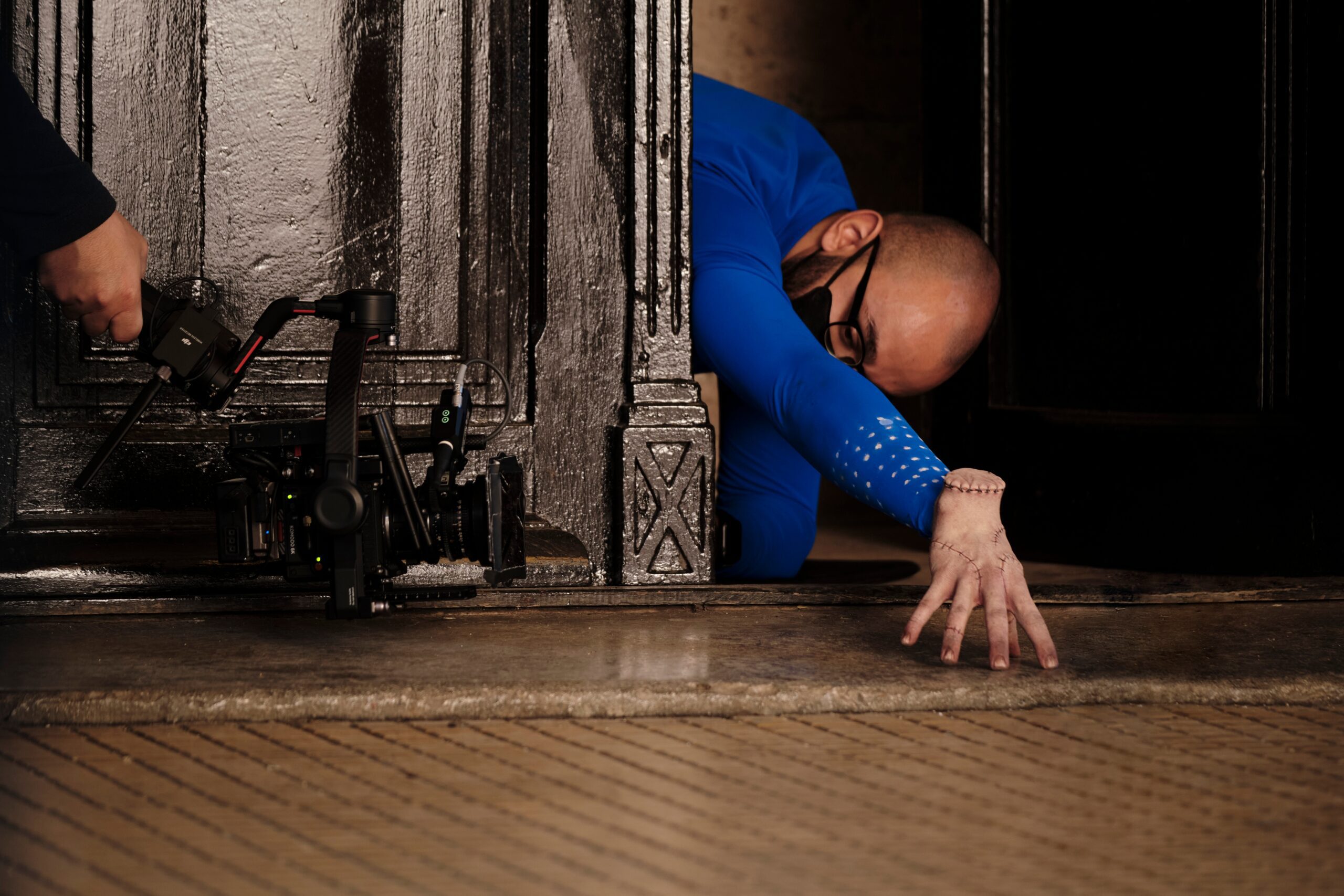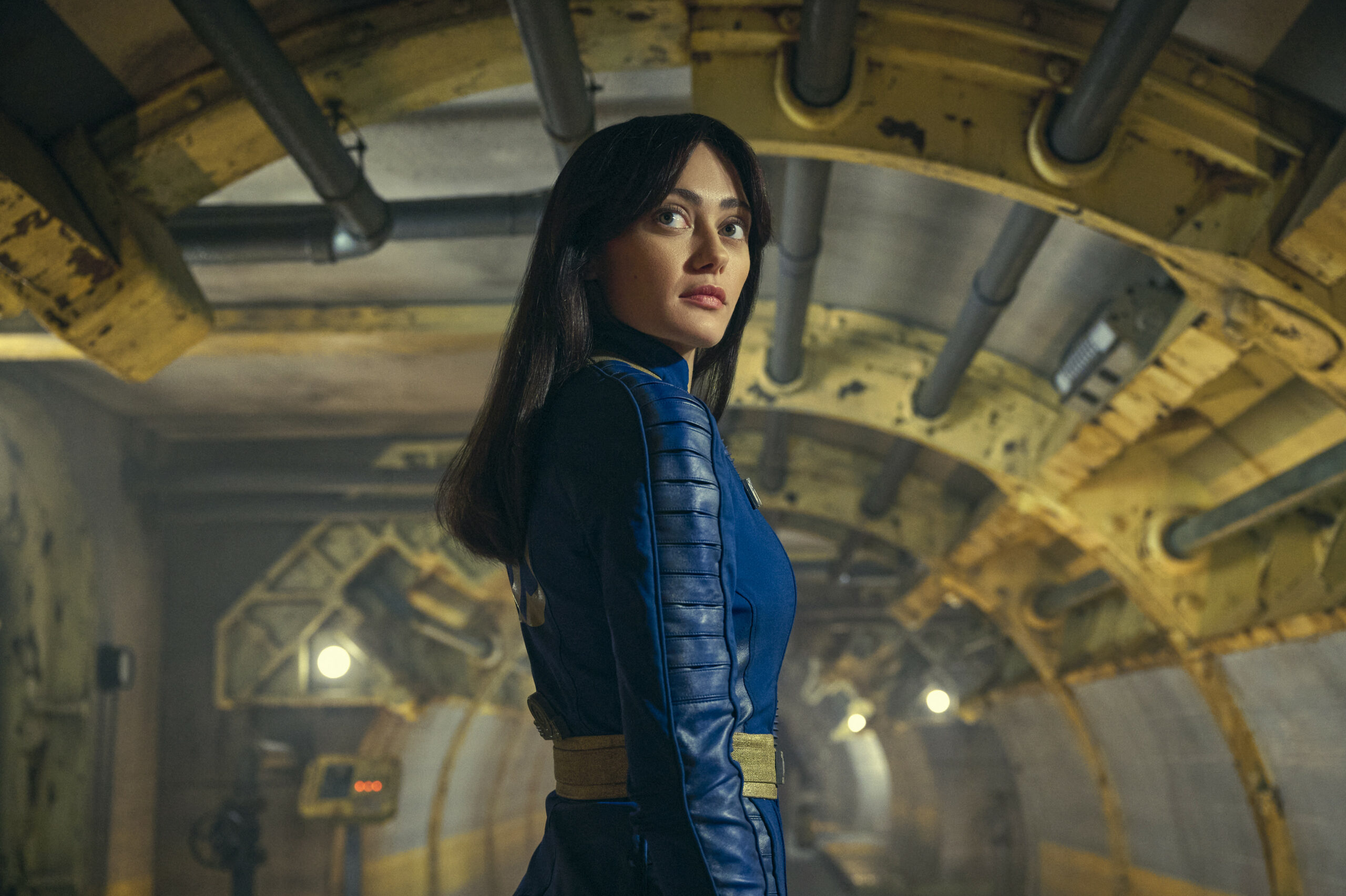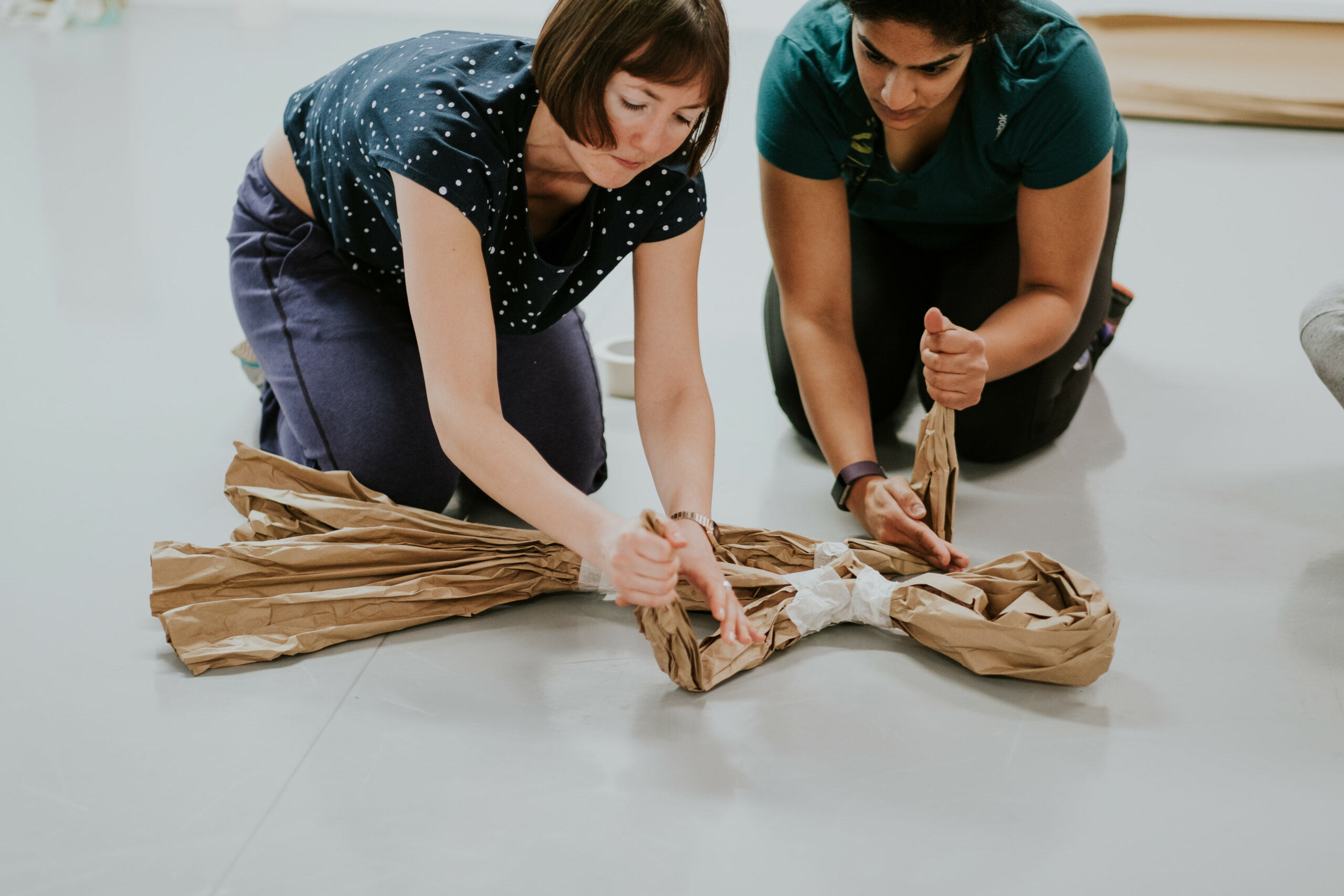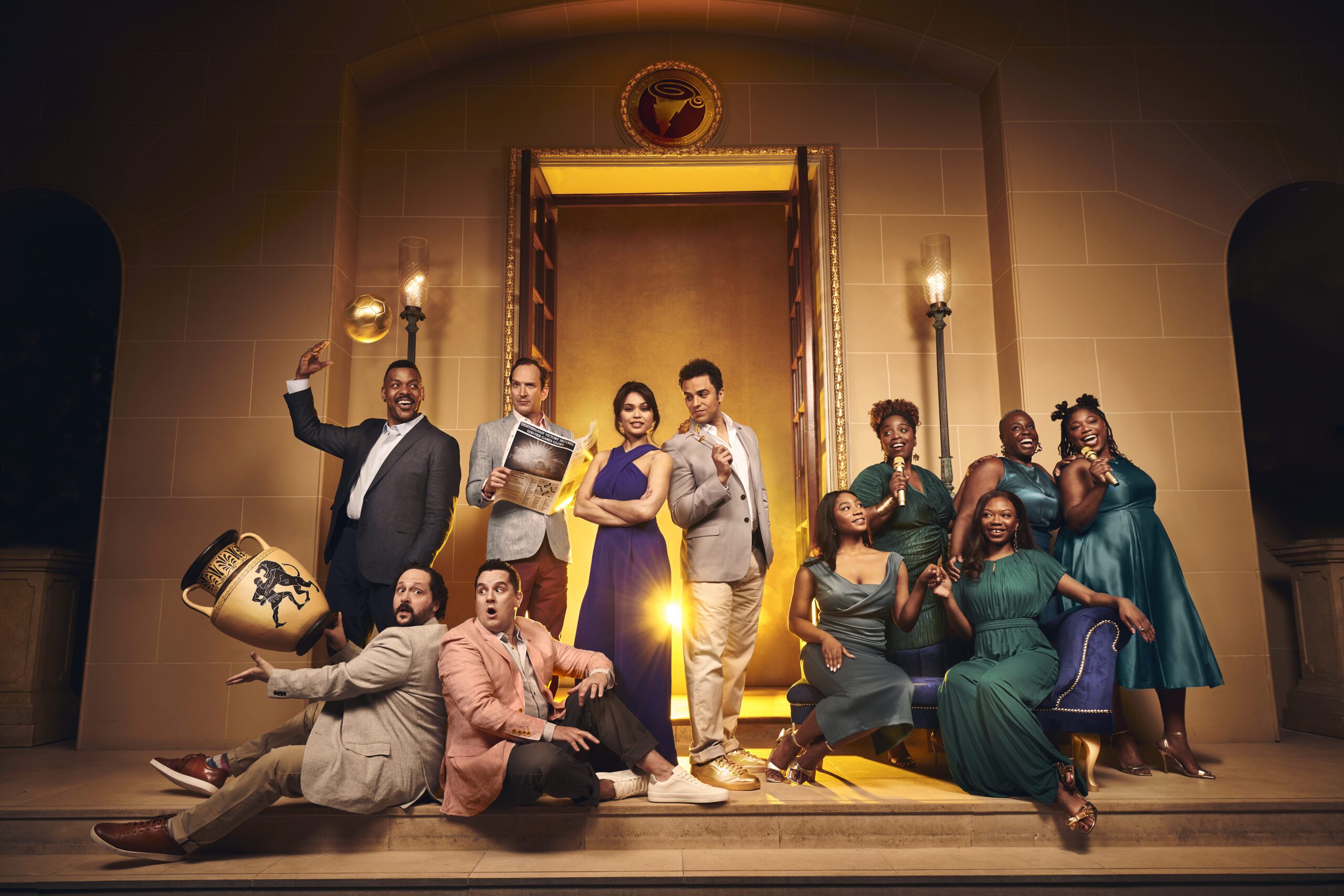Performer Victor Dorobantu shares how he brought the non-verbal character ‘Thing’ to life in Tim Burton’s ‘Wednesday’.
Since their creation in 1938 as comic characters in The New Yorker, the Addams Family have been adapted into plenty of TV shows and films. However, none of these had connected with viewers as much as Tim Burton’s Netflix series Wednesday. Starring Jenna Ortega in the titular role, the first season of the series sees ‘Wednesday Addams’ attending a supernatural school while trying to solve a murder.
Among the colourful and macabre cast of characters – all brought to life through Tim Burton’s iconic Gothic style – one stood head and shoulders above the rest, even though they possess neither. We’re of course referring to ‘Thing’ – the living, disembodied hand who gets more emotion and meaning across with a few finger taps than some characters do with entire sentences. ‘Thing’ is brought to life by Romanian magician-turned-actor Victor Dorobantu, who landed his acting debut when Tim Burton and the production team chose him for the role.
We had the chance to talk to Victor about his iconic role – and we’ve never been so thrilled to talk to the hand! From his audition for Wednesday and his experience working with Tim Burton, to the process behind filming as ‘Thing’ and the challenges of non-verbal acting, here’s what Victor had to share:
Hi, Victor! How did you first become involved in Wednesday?
I was initially a magician. I was trying to expose myself out there to the public, so I went to some talent shows in Romania. They weren’t so successful – I failed two times. I heard Tim Burton and his team were looking for an actor to play ‘Thing’ and they were looking for a magician specifically. In the black and white movies, they used a magician as well, Christopher Hart. Maybe they thought a magician would be the perfect person to have the dexterity and everything?
I got a phone call randomly one day. I wasn’t part of any agency. I wasn’t even on any list in the world, but I got a phone call. I think they Googled ‘magicians in Romania’ and they found a video from that talent show where I failed, and they called me to a casting with other magicians. I literally ended the phone call because I thought it [was] a joke or a prank or a scam. So, they called me three or four times and they convinced me to go to the casting.
It wasn’t so much about hand acting at the audition. It was more about creating the character or what ideas you have for the character to develop, because they were still trying to build it up, starting with prosthetics, to how he talks and how he moves. After I met Tim Burton at the last audition, he chose me.
What did you have to do at the audition?
I think it was three auditions. The first one was photos. The second one was videos, like walking with the hand. And the third one was talking to Tim Burton, not showing the hand at all. I just spoke about what I think ‘Thing’ should look like or act like or behave.
I don’t know how to say it, because I don’t want to sound like I’m a producer for the character, but Tim Burton, Miles [Millar] and Alfred [Gough] always let me decide some things about ‘Thing’ because it’s a very tricky character to perform. It’s not like any other creature. It’s just a hand, and you have to find ways to make it as emotional as possible, but not make it too much so it doesn’t look like a cartoon character.
When you talk about it, it looks easy, but when you really do it with the prosthetics to make it look like a self-standing creature, it’s very complicated. Even walking is very specific. It has to be balanced. It has to be with a specific emotion, anger or happiness. It’s a lot of work that we’ve put into ‘Thing’, especially in season one, when we created it.
The script doesn’t have any lines for ‘Thing’. It’s just text where it says what ‘Thing’ has to transmit. After I read the script and see the other characters’ reactions, I have to find a way to [express] that emotion. Fun fact about that: in season one, I never read the entire script, so when the show was on Netflix, all my friends were asking, “Who’s the monster?” and I didn’t know. I was as shocked as everyone else.
With season two, I had to read the script. I tried for one or two weeks to avoid it, and then when I realised what’s happening with the other characters and what I saw on set, I was like, “No, I have to read this.”
This was your first time acting professionally. How did you find the experience?
When I was a teenager, I was acting, but not professionally. I was trying to do a side job because I had a really modest family and didn’t have my own pocket money. I was trying to find ways to make money on the weekend when I was free and not at school. So, since I was 15, I was working with a local theatre that was more like an after-school club for kids. I was the kids’ entertainer. Then I started acting in kids’ theatres and then I started doing magic to entertain the kids.
I thought I was acting, and I also had friends [who] were acting in the big theatres, but I didn’t know the feeling of being on a set. I swear that no actor in this world knows what a Tim Burton set feels like, because when you walk on a set that is created by Tim Burton, you are in the story. If you ignore the cameras, you’re really there. It’s amazing work that they’ve done in season one and season two. The sets look so amazing that you have to take a day to be in shock.
When I first stepped on the set, I was very emotional. I cried for days and days because I didn’t imagine myself doing stuff like that. Season 1 and the aftermath of it was literally a waterfall of shock. I didn’t know how to express my feelings. Every day, I was getting used to the set, and then I realised the actors I [was] next to, so I was emotional again. And then, after the show was on Netflix, the aftermath and the reactions of the public around the world and the press and everything – it’s a little bit overwhelming, and somehow you feel like you don’t deserve it when you didn’t do it before.
Could you tell us about the filming process for your scenes?
The process is so long – we’ll need an hour to talk about it! But, to make it short, the first part is prosthetics. The make-up takes two hours and the stump that goes on top of my wrist depends on the scene we’re shooting, because we have different shapes for different scenes and sometimes we have to change them during the day. So, some days we have two hours for each round of make-up.
Then we put my blue suit on, which acts like a chroma key. When we shoot, people think we’re shooting in a studio and then they edit it and put it in the show. The reality is I’m shooting right next to the other characters in real time. We usually shoot a scene with me and the other characters as it would normally be, then they take me out and they shoot the same scene again, but very specifically with the same camera movement, with the same light, everything. So, it acts like filming the background, what was behind my body when you shot it.

Image credit: Vlad Cioplea/Netflix / Victor Dorobantu as ‘Thing’ with Jenna Ortega as ‘Wednesday’ on the set of ‘Wednesday’ (Season One)
Then they take another shot with nobody in frame, they take VHR shots, they take photos or videos of the environment, so they know where the lights and everything was placed. Then they take a shot of a chroma ball where ‘Thing’ was, so they know how the light was hitting on each side of the hand. Then they take a shot of something that’s called the chip chart or the colour chart. It’s a small chart, like the make-up one, where you can see all the colours that are involved in that type of lighting, so ‘Thing’ looks as real as possible when they delete my arm.
It’s very complicated for the electric and light departments because my body is casting shadows and you have to take care of each thing that you’re removing from the image. It’s also very complicated for the other actors to talk to a hand and sometimes to talk to something that’s not even there.
And then the longest process is the post editing, which is very complicated for ‘Thing’. It takes a lot of time.
The process of shooting with ‘Thing’ is very expensive, very complicated and very tricky, but we have experience now and we [have] developed a way of doing it. Now we’re doing some VFX shots in a studio with motion capture because some shots are very complicated for my body to shoot. For example, if ‘Thing’ jumps off a building, that means my body is doing that too. I’m not a stuntman, so we have to shoot it with motion capture.
We’ve developed some sensors that are created specifically for my hand, because motion capture for other creatures is with a full body, but a hand is very specific with every movement. Even in the shots where ‘Thing’ is not there, it’s still me controlling it with motion sensors in the studio.
We have casts of my hand that are very realistic, made of silicone, and they have armature inside. So whenever a very dangerous stunt is performed, I have my own doubles! They’re travelling around the world doing commercial shoots, doing photos with the Netflix marketing department. And it’s funny to know that airport security has to check bags and find hands the same as ‘Wednesday’ did in the trailer that we just posted on Netflix.
What was it like working with and taking direction from Tim Burton?
I think Tim Burton is a very special director. He’s very specific about his work. He’s very creative, he’s very goth. Tim Burton is exactly like his characters.
Working with Tim is a very good opportunity because he’s not just a director to us. He’s a friend, he’s family, he’s a colleague and he treats us as his friends. There’s lots of times when Tim allowed me to create the movement for ‘Thing’ or the scene for ‘Thing’. So he sometimes lets you direct your own scene, and I’ve seen him doing that with all my castmates. Everybody loves him.
How challenging is it to convey the emotions of ‘Thing’ using only hand movements?
Even in cartoons, when you look at the cartoon character – let’s say it’s a fridge – they draw a mouth and eyes to transmit emotion. ‘Thing’ doesn’t have a mouth to smile or eyebrows or anything. It’s just how fast you move, the way you put tension in your fingers and stuff like that, so it’s a very complicated process to find a way to express an emotion. To be honest, I didn’t plan it, exactly. Most of the time, I just improvised until I nailed it. I had to create my own language for ‘Thing’ – tapping, gesturing. It’s so many things.
The role must be very physically demanding. How do you warm up and prepare yourself before filming scenes and take care of yourself after?
Honestly, it’s very complicated because, technically, you think I should be like a contortionist, but I’m not supple at all. I’m not fit, but I found a way to do it.
The people on set take care of me a lot, especially in season two. When I landed a knee on the ground to bend behind an object, they always came to me like, “Hey, do you need a pillow? Do you need me to make the ground softer for you? Do you need me to clean it?” Everybody’s making it easier.
Of course, I have to stretch and keep myself fit when I’m shooting. It’s not that easy, but when you see what comes out of this work, you forget about it. I was very tired physically after season 2 – you will see why after you watch the season, you’ll understand how much work was put into it. I needed a couple of months to recover. But I would do it again and again and again forever.

Image courtesy of Netflix / ‘Thing’ in ‘Wednesday’ (Season 2)
Were there any differences in the filming process between Wednesday season one and two?
It was a huge difference. I can’t tell you why, because everything that I say would spoil it, but it was a lot more from all points of view regarding the entire cinematographic industry. Every department that you think of had 10 times more work to do.
Everything that you see in the show is me. And when it’s not me 100%, it’s me in a studio controlling ‘Thing’ with motion capture, where it was impossible to use my body to do it.
Has your time on Wednesday made you want to pursue other acting opportunities?
I’m trying to. Since I wasn’t an actor before this show, I didn’t know how it’s done. I didn’t know what [having] an agent meant. I’m still learning. I don’t want to join other projects at the moment because I’m still working, but I’m dreaming about being a creature performer now, because this is the beauty of what I’ve done until now. It’s giving life to creatures.
What would be your dream creature to bring to life?
I would create the creature. I admired ‘Vecna’ from Stranger Things a lot. I don’t know – any creature that needs to be with a lot of emotion. Nobody else would do it the same [way].
Finally, what’s the entertainment industry like in Romania?
The industry doesn’t know how many great actors are in Romania. Most acting in Romania starts with theatre – it’s on another level. I think that if Romanians and the artists in Romania had more opportunities, they would amaze the world. But unfortunately, I think Romania is not investing enough in art in general, especially in acting. I know a lot of people [who] are very talented and they don’t have the opportunity to do it.
If I ever had the power to make them more visible, I would. A platform like Spotlight has this power – to make people see the talent. Entertainment in Romania revolves more around TV shows, but they’re not the kind of ones that would create a career outside of Romania for an actor.
But I think we have the power to show the world what we are. I have always thought [that] whenever you have gained power from your own resources or from what you’re working on, you should use it to help other people as well. So I will try to do that whenever I have a little bit of power.
Thank you, Victor, for sharing your experience on the show! ‘Wednesday’ Seasons 1 and 2 are available to watch on Netflix in the UK now. Victor is represented by Warren Bacci at TTA in the UK.
Take a look at our website for more casting stories and interviews with performers, casting directors and agents.





